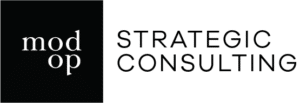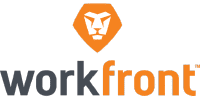Marriott sells hotel rooms. PepsiCo sells food and beverages. Nike sells shoes and clothes. Your business sells things too: news, software, professional services, widgets…whatever. But deep down most people aren’t buying these things. What they are buying is a solution to one of their problems. So, tell me again…what you are selling?
As a business traveler, I’ll look for a convenient place to spend the night close to tomorrow’s big meeting. But when traveling with my family, I’ll prefer a relaxing getaway somewhere interesting. In both cases Marriott is selling me a hotel room. But what I’m buying are the solutions to two very different problems. And this not-so-subtle difference determines what I am willing to spend and what my expectations are for, basically, the same product.
The prime motivating factors in this purchasing decision can be better understood using a framework of Wants, Needs and Fears. The hotel room met my desire (Want) to stay in a specific location with the appropriate level of service, my Need for shelter when traveling; and my Fears—in this case, providing a feeling of safety and receiving the appropriate value for my investment.
In this case, my Need could have been solved in other ways, such as staying in a motel, inn, bed and breakfast, Airbnb or even on a friend’s couch. It was my Wants and Fears that steered my purchase.
The Wants, Needs and Fears framework
Assessing your customers’ or prospective buyers’ intentions through this lens will help you to better understand the psychology behind their purchase, which, in turn, will help you to better meet their needs—and better solve their problems.
Wants
(including aspirations and desires) are attributes which we would like or prefer, but may not be necessary. I want—or aspire to have—a helicopter to bring me to work every day (hey, a guy can dream).
Wants encompass such attributes as success, comfort, abundance of money, attractiveness, health, recognition, business opportunity and sex appeal. These are powerful motivators for driving the buyer above the minimum requirement for solving their problem. Wants drive incremental value. And Wants and Needs are not the same.
Needs
begin at the lowest levels of Maslow’s famous hierarchy of needs: food, water, warmth, rest, security and safety. And they can be stretched a bit further to include freedom, identity, understanding, family, friendship, confidence, respect and purpose. Regardless, Needs are the basic, rational, minimum requirement we must have to solve our problem. These are often the starting point for assessing a purchase decision.
I need to get to work every day. Walking or public transit is capable of getting me there.
Fears
universally boil down to outcomes such as failure, injury, death, isolation, rejection or some form of the unknown. And, to a lesser degree clowns, spiders and public speaking—more specific undesirable objects or actions.
There are two types of Fears involved in a purchase decision:
(1) Fear of the risk pertaining to the problem itself—the risk of doing nothing, and
(2) Fear of the risk of selecting your product—the risk of solving the problem incorrectly.
If I don’t go to work, I’ll lose my job. But I’m afraid the bus will take too long, and that paying for a helicopter is irresponsible.
Fears have the ability to stall or derail a potential sale, or to steer the value of the sale upward.
Solution
When my Wants, Needs and Fears are correctly aligned, the solution to my problem comes into focus. And the maximum value for both parties is derived from the sale.
I have to go to work in a timely but financially responsible way. Therefore I’ll buy a car and drive.
The motivating factors in a purchase decision have more to do with the buyer (and her needs) than with the seller (and the details of his product). By understanding this, you can better understand how a potential buyer can select your offering. You can increase the likelihood that your hotel rooms will be filled, your drinks will be consumed, your sneakers will be worn and your widgets will be purchased. It starts with listening to why—not what—your prospective customer is interested in. Then aligning your value proposition as the solution to their problem. The Wants, Needs and Fears framework is a great starting point.
Want to learn more about aligning your products and services with your customers’ problems? Email me at

















